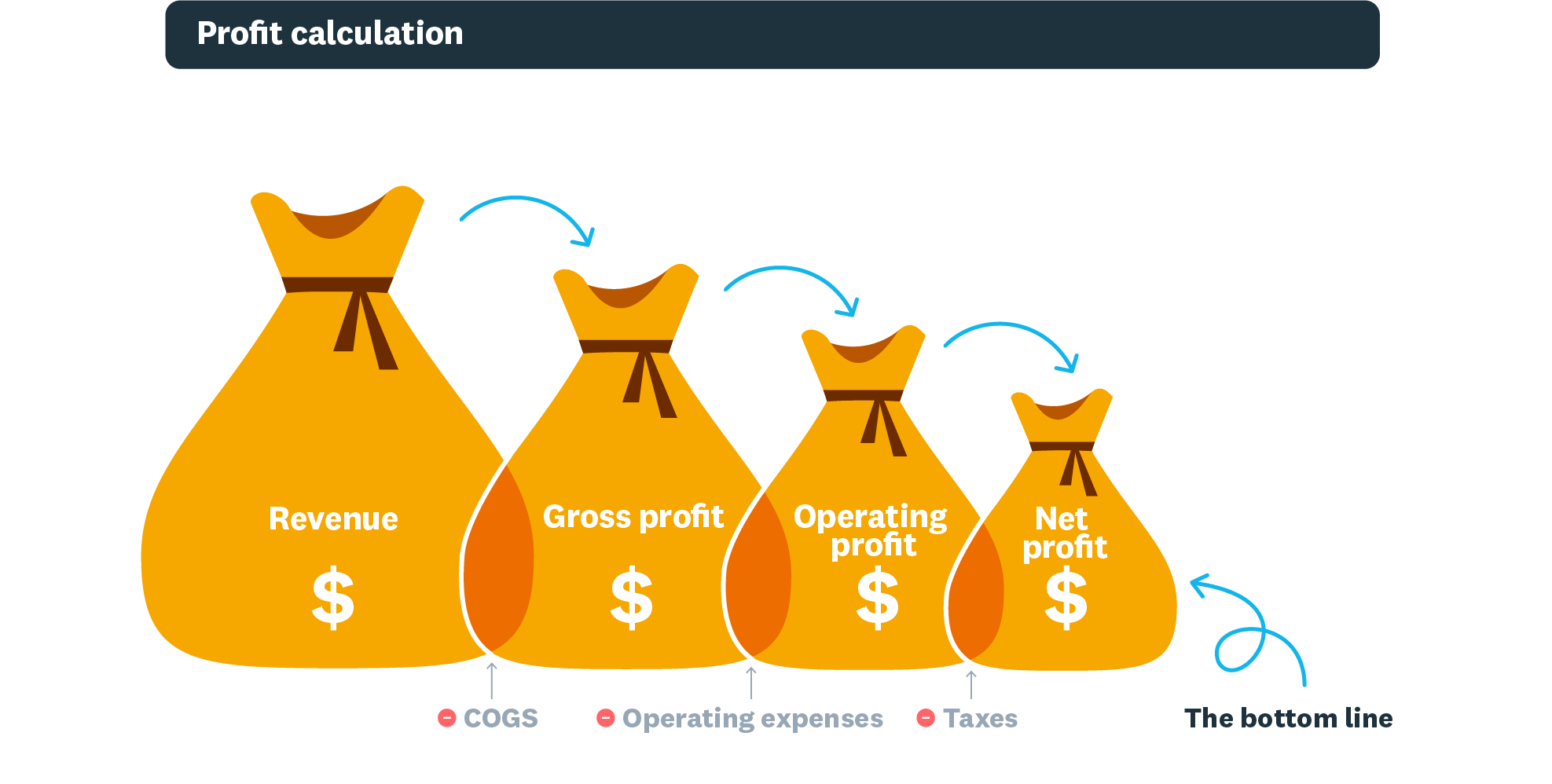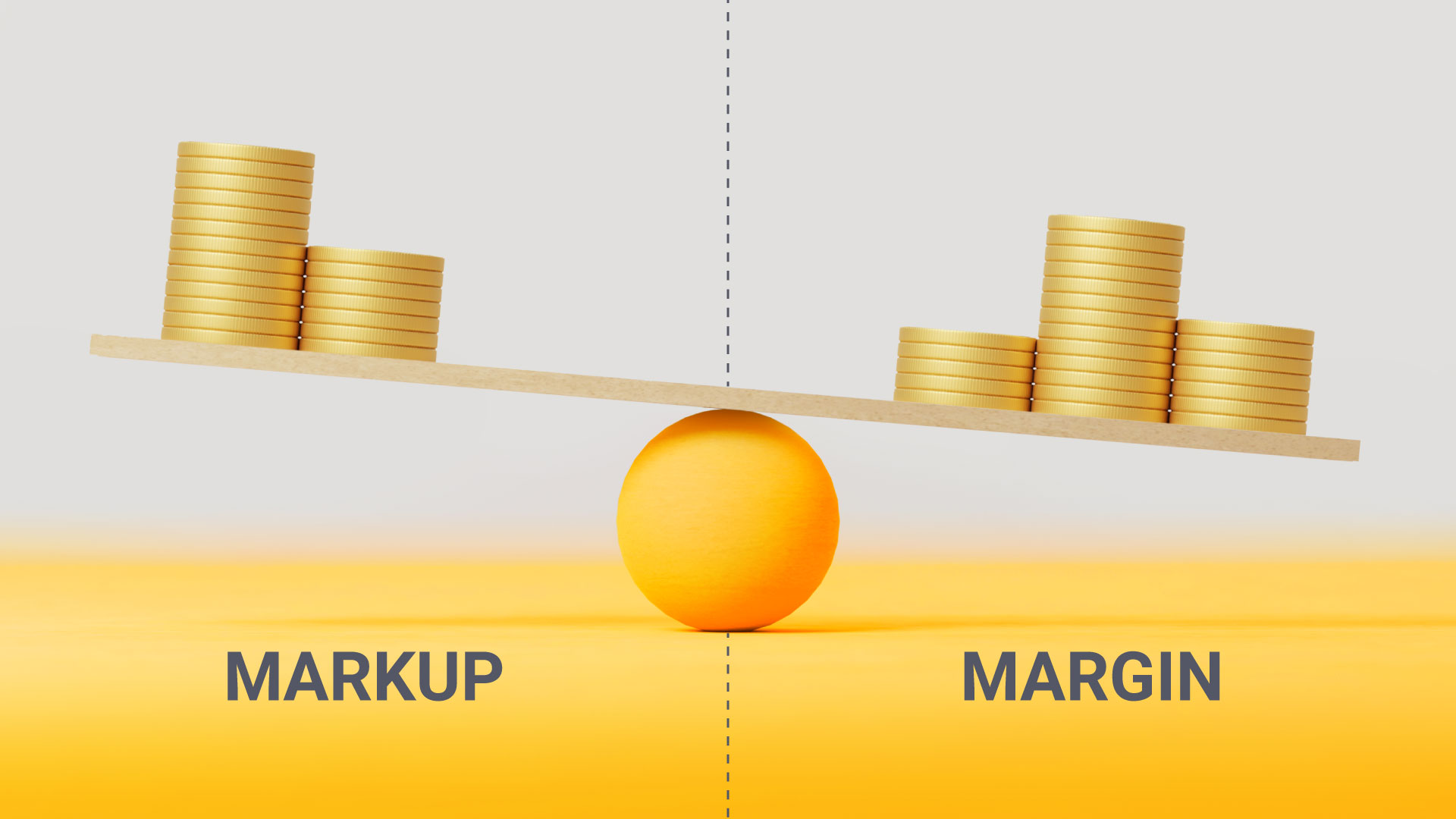- Cost Price (C.P.) – The price at which an article is purchased is called its cost price.
- Selling Price (S.P.) – The price at which an article is sold is called its selling price.
- Profit – If the selling price of an article is greater than its cost price, we say that there is a profit (or) gain.
- Loss – If the selling price of an article is less than its cost price, we say that there is a loss.
- Discount- To reduce inventories or motivate buyers, stores often have sales of goods, shopkeepers offer rebates to customers. Instead of a per cent increase, this is a per cent decrease, which results in a sale price. The price printed on the price tag of an article is known as its marked price or listed price. The price at which the article is sold to the customer is the selling price. Discount is always calculated on the marked price of the article.
Profit
Profit in Maths is considered as the gain amount from any business activity. Whenever a shopkeeper sells a product, his motive is to gain some benefit from the buyer in the name of profit. Basically, when he sells the product more than its cost price, then he gets the profit on it but if he has to sell it for less than its cost price, then he has to suffer the loss.
The concept of profit and loss is basically defined in terms of business. Any financial benefit gained in business goes to the owner of the business.
In general, the profit is defined as the amount gained by selling a product, which should be more than the cost price of the product. It is the gain amount from any kind of business activity. In short, if the selling price (SP) of the product is more than the cost price (CP) of a product, then it is considered as a gain or profit. It describes the financial benefit obtained if the revenue from the business activity exceeds the taxes, expenses, and so on, which are involved in sustaining business activities.
Profit Formula
Profit is explained better in terms of cost price and selling price. Cost price is the actual price of the product or commodity and selling price is the amount at which the product is sold. So, if the selling price of the commodity is more than the cost price, then the business has gained its profit. Therefore formula to calculate the profit is;
Profit or Gain = Selling Price – Cost Price
But, when the product is sold at selling price lesser than the cost price, it is termed as loss. Therefore,
Loss = Cost Price – Selling Price
Profit Percentage
Once the profit is calculated we can also derive the percentage profit e have gained in any business by the formula given here;
P% = (P/CP) × 100
Where P is the profit and CP is the cost price
Types of Profit
There are three types of profit used in business. They are:
- Gross Profit
- Operating Profit
- Net Profit

Gross Profit
Gross profit is the amount gained by any business or company after removing the cost associated with the making and selling of the product from the selling price. The revenue yielded in the company’s income after sales of the commodity should be reduced by the amount or cost it took to make the product or provide any service to the customer’s, to get the gross percentage of the profit.
The formula to calculate the Gross Profit is:
Gross Profit = Total Sales – COGs
Where COGs represents the cost of goods sold.
Operating Profit
A business’s operating profit tells what is the contribution of the company’s operations to its profitability. The operating profit is basically the ratio of operating income and sales revenue.
The formula to calculate the Operating Profit is:
Operating profit = Gross Profit – Operating Expenses
Also, Operating Profit Margin = Operating Profit / Total Sales
Net Profit
Net profit includes all the cost amount generated by the business as revenue. It represents the actual sum of money made by any business.
The formula to calculate the Net Profit is:
Net Profit = Operating Profit – (Taxes and Interest).
Companies examine all three types of profit with the help of a profit margin. In such case, the profit, whether gross, operating, or net, is divided by the return. It exhibits how well the business uses its earnings. A large ratio means it makes a lot of profit for each revenue. A low ratio means the business’s costs are consuming into its profits. Ratios vary according to each trade.
How to Calculate Profit?
To calculate the profit gained by any business, follow the steps below:
- Determine the cost price of the products sold.
- Now calculate the total selling price of the products sold.
- Subtract the cost price and selling price, to get the profit amount.
- To calculate the profit margin, divide the profit amount with cost price.
- Multiply the profit margin with 100 to get in percentage.
Example:
If a shopkeeper sells Apple at Rs.200 per kg, whose cost price is Rs.150/- per kg. Then find the profit gained by the shopkeeper.
Solution: Given Cost Price = Rs.150/-
And Selling Price = Rs.200/-
From the formula of profit, we know,
Profit = Selling Price – Cost Price
P = 200 – 150
P = 50
Therefore, the shopkeeper gains Rs.50/- from the business.
Example:
Sanju sold a digital camera for Rs.5,000, on which he gains 25%. What is the cost price of the camera?
Solution:
For the digital camera: Gain = 25%.
Let cost price (C.P.) = Rs.100.
Therefore, selling price (S.P.) = (100 + 25) = 125
When selling price (S.P.) is Rs.125, cost price (C.P.) is Rs.100.
Therefore, when selling price (S.P.) is Rs.5000,
cost price (C.P.) = 100/125 × 5000 = (100 × 5000)/125 = 500000/125 = 4000
Therefore, cost price (C.P.) of the digital camera = Rs. 4000.
Example:
A shopkeeper buys watches in bulk for Rs. 20 each. He sells them for Rs. 45 each. Calculate the profit and the profit percentage.
Solution:
Given,
Selling price of the watch = Rs. 45
Cost price of the watch = Rs. 20
Now, Profit = Selling Price – Cost Price
So, profit on the watch = 45 – 20 = Rs. 25
Using the formula for profit percentage,
Profit % = (Profit / C.P.) × 100
So, the profit percentage of the shopkeeper will be (25 / 20) × 100 = 1.25 × 100 = 125%.
It can be said that the shopkeeper made a profit of Rs. 25 from each watch with a profit percentage of 125%.
Mark up
Mark up refers to the value that a player adds to the cost price of a product. The value added is called the mark-up. The mark-up added to the cost price usually equals retail price.
Markup refers to the cost; margins to the price.
